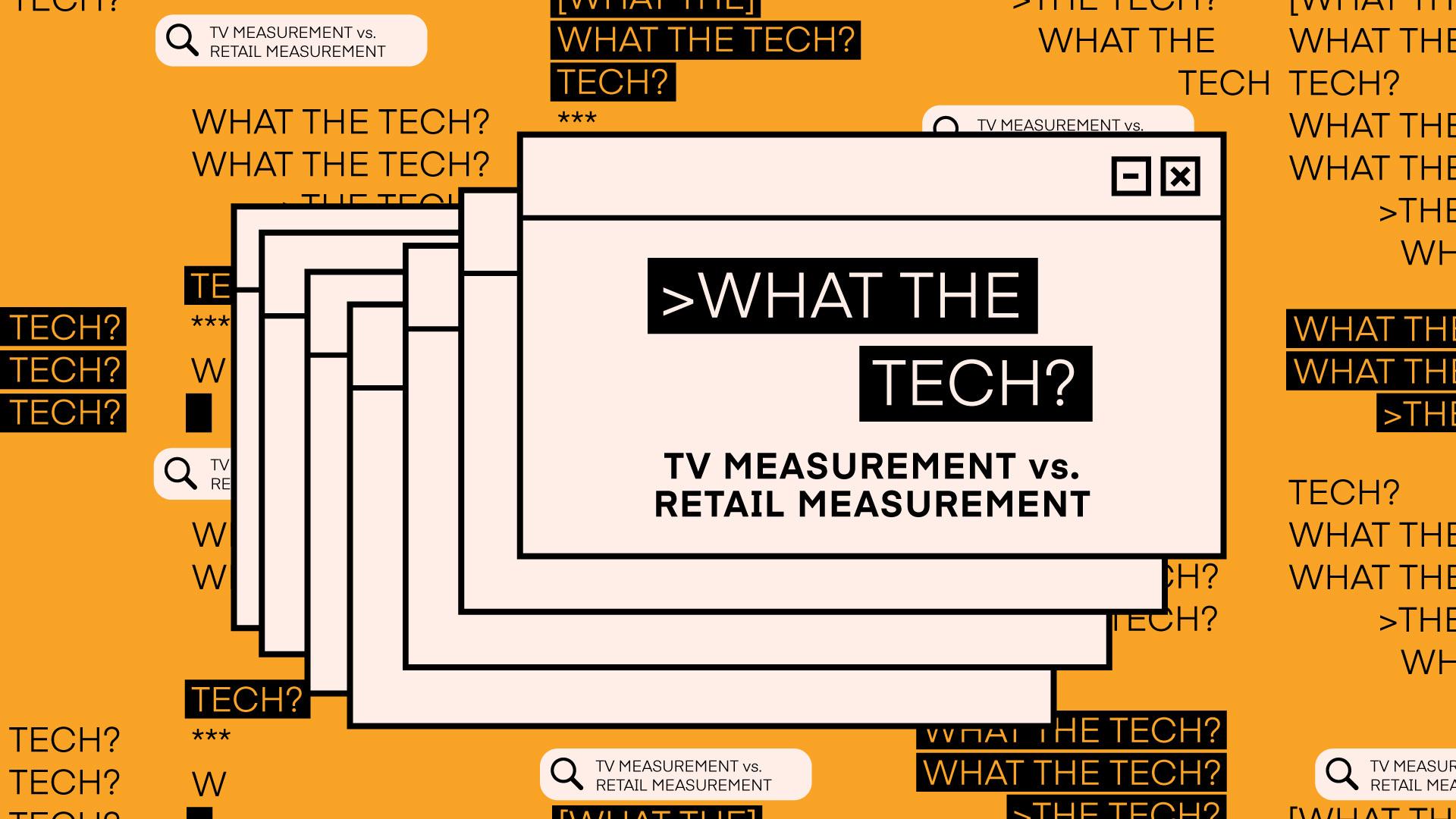What the Tech is TV measurement vs. retail media measurement

There are numerous ways to measure the effectiveness of an ad campaign, such as CPM, CPA, and GRP, to give just a few examples. For many consumer packaged goods brands, campaign measurement is split between two main categories: 1) TV measurement and 2) retail measurement.
We break down those two categories below, exploring how measurement is conducted in each channel and how it helps brands optimize their campaigns and make the most of their advertising budgets.
What is TV measurement?
Conceptually, TV measurement is easy to understand. As the name indicates, it’s how brands evaluate the effectiveness of their TV advertisements.
In practice, though, TV measurement can get quite complicated. The shift from linear TV (the good-ol’ days of bunny ears and cable bundles) to over-the-top (OTT) television and connected TV (TV delivered via an internet connection) has forced marketers to embrace new systems of measurement.
How has TV measurement changed?
Digital television, often also referred to as connected television, has made television measurement more sophisticated.
Prior to streaming, the predominant measurement model for television was gross ratings point. (GRP has been around since the advent of TV advertising in the 1950s, to give an idea of how out of date it is.) Gross ratings point measures the supposed impact of a TV commercial and is expressed as a single number. GRP is calculated by multiplying the percentage of the target market reached by exposure frequency.
An example: Say a laundry detergent brand wants to advertise to women, ages 30 to 49, who have children. The brand runs a commercial during the Vanderpump Rules reunion show (still reeling over #Scandoval) on Bravo. The commercial runs three times during that broadcast and reaches 30 percent of people in that target demographic. The GRP for this campaign would be 90.
Here’s what the math looks like: 3 (number of exposure) x 30 (percentage of target audience reached) = 90 (GRP)
GRP is an imprecise measurement, though. It measures only how many people saw the ad, and gives no indication if exposure to the campaign resulted in any changes in the viewer’s buying behavior. Digital TV offers a more comprehensive approach to TV measurement.
How is connected TV measurement better?
For one, connected TV is more accurate for measuring reach. On linear TV, reach (the sheer number of people who were exposed to an ad campaign) is an educated guess. Market research firms pay households across the country to install a device into their televisions to track what shows are watched in those homes. Market research firms extrapolate that data to estimate the viewing habits of the entire populace. Connected TV, however, lets you know more precisely how many people watched a given program.
Connected TV also enables marketers to track the incrementality of their TV campaigns. That is, marketers can parse out the incremental value of each distinct TV ad and optimize their ad spend accordingly.
Simply put, connected TV is a more cost-effective way to spend advertising dollars.
How does retail media measurement differ?
Retail media refers to the advertising space that exists on an e-commerce site. When you search for a pair of headphones on Amazon and you see a promoted listing for Bose headphones, that’s an example of a retail media ad. Bose, the advertiser, paid for the premium placement, and Amazon, the retail media network in this case, earned revenue from it.
Retail media is a huge and quickly growing category. A quick glance at the 100 most-visited websites in the U.S. shows Amazon (No. 6) and Walmart (No. 15) among the most popular destinations on all of the web for March 2023.
Measurement on retail media sites is relatively straightforward and easy to track. If a consumer clicks on the ad and buys the product, you have a clear and immediate signal the ad worked and resulted in a conversion.
That’s also the problem with retail media measurement; it’s entirely self-contained. Marketers have trouble measuring if their ads on other platforms affected sales on retail media networks.
Is there any way to connect TV to retail media measurement?
However, there is a way to do just that. Using Unified ID 2.0, an industry-wide identity solution or another alternative identifier, marketers can connect a person’s viewing habits to their other online activity, including the items they buy on retail media networks. Using a privacy-conscious, cross-platform identifier, marketers can see if a connected TV ad resulted in a sale on a retail media network.
Building this bridge between TV measurement and retail media allows for closed-loop attribution, which is incredibly valuable — considered the Holy Grail! — to advertisers. Knowing the full scope of a consumer’s journey — from their first exposure to a campaign, to their eventual purchase of the product — combines the powers of connected TV and retail media to create something even greater.
Subscribe to The Current
Subscribe to The Current